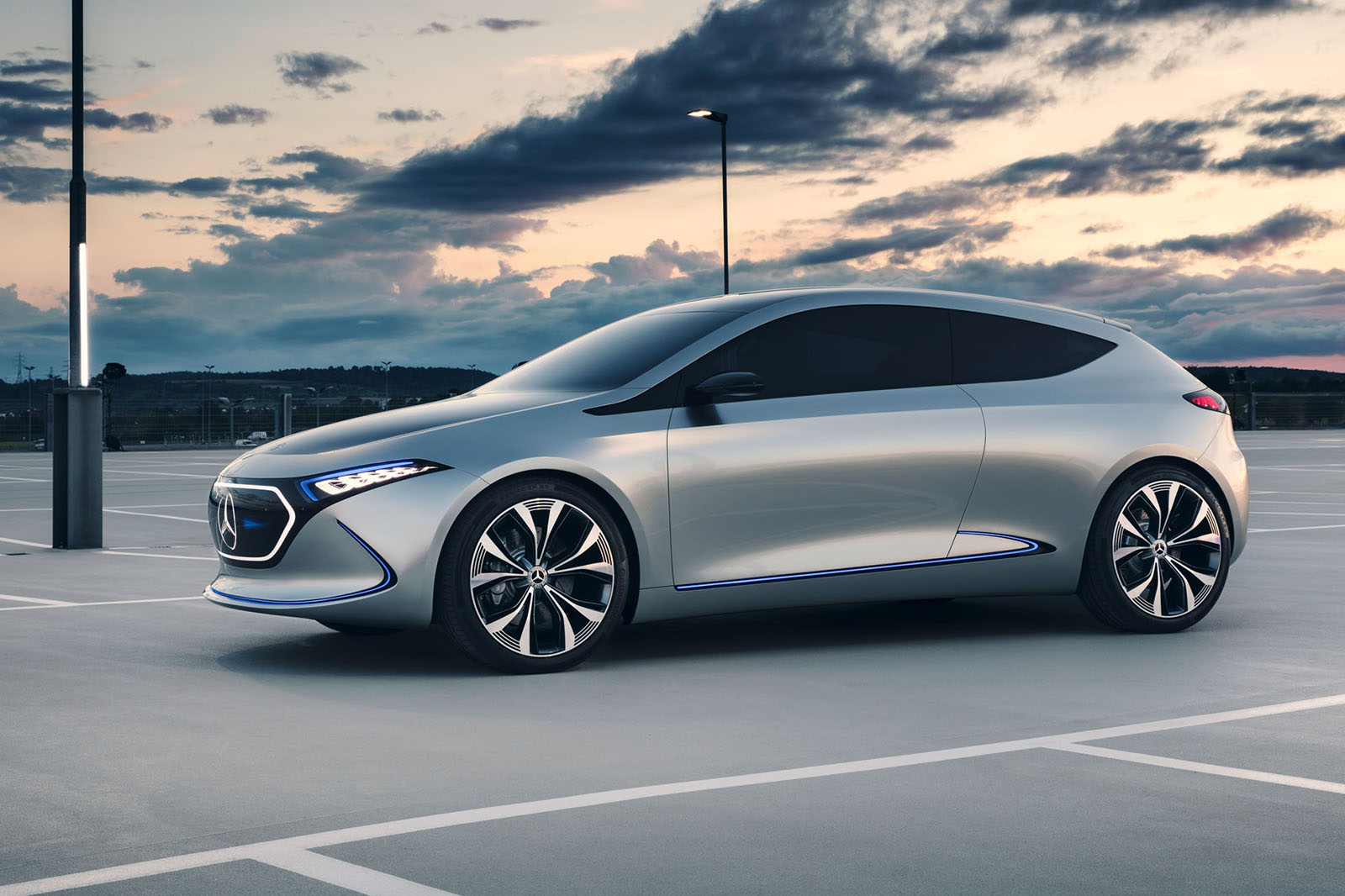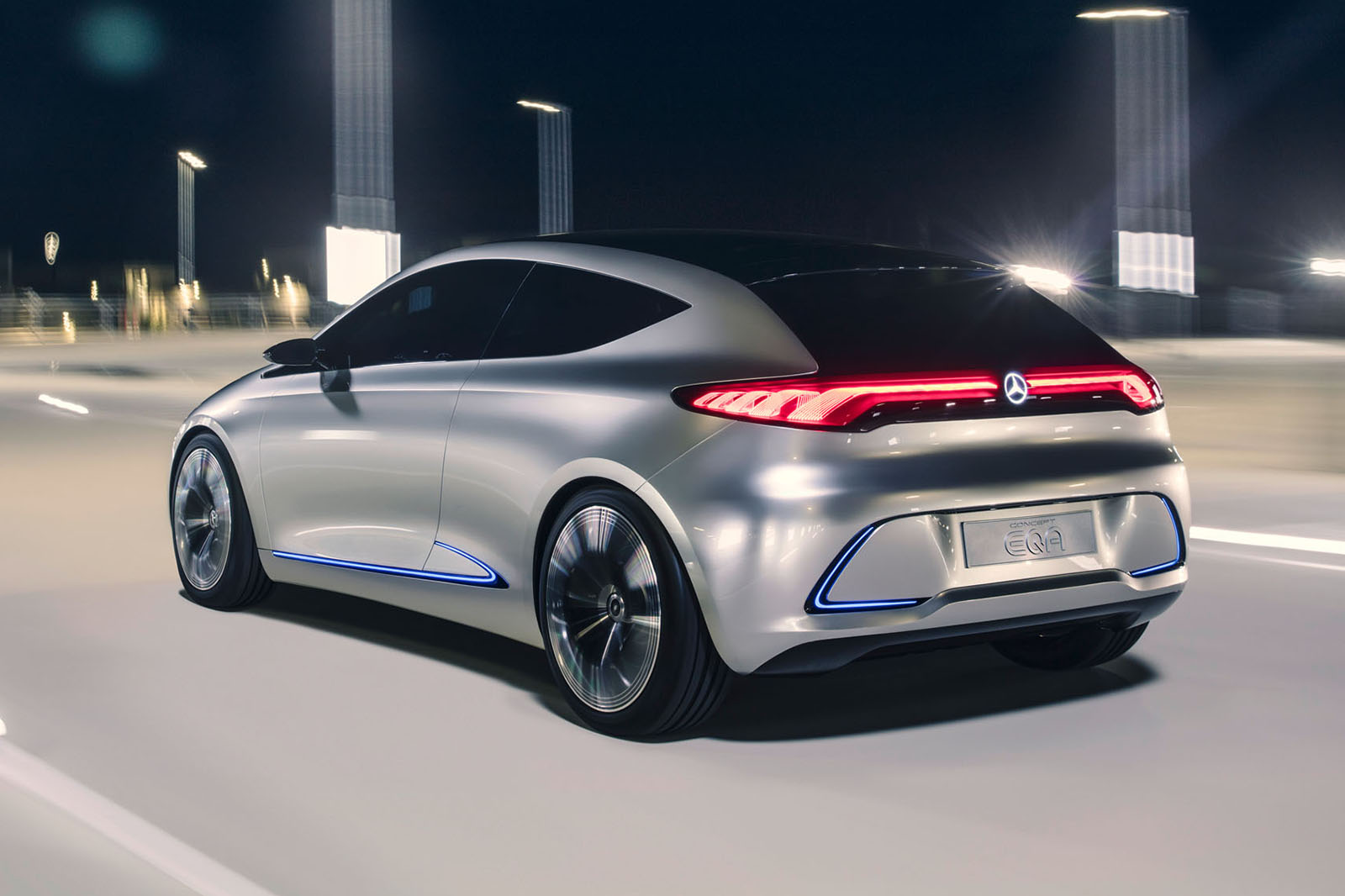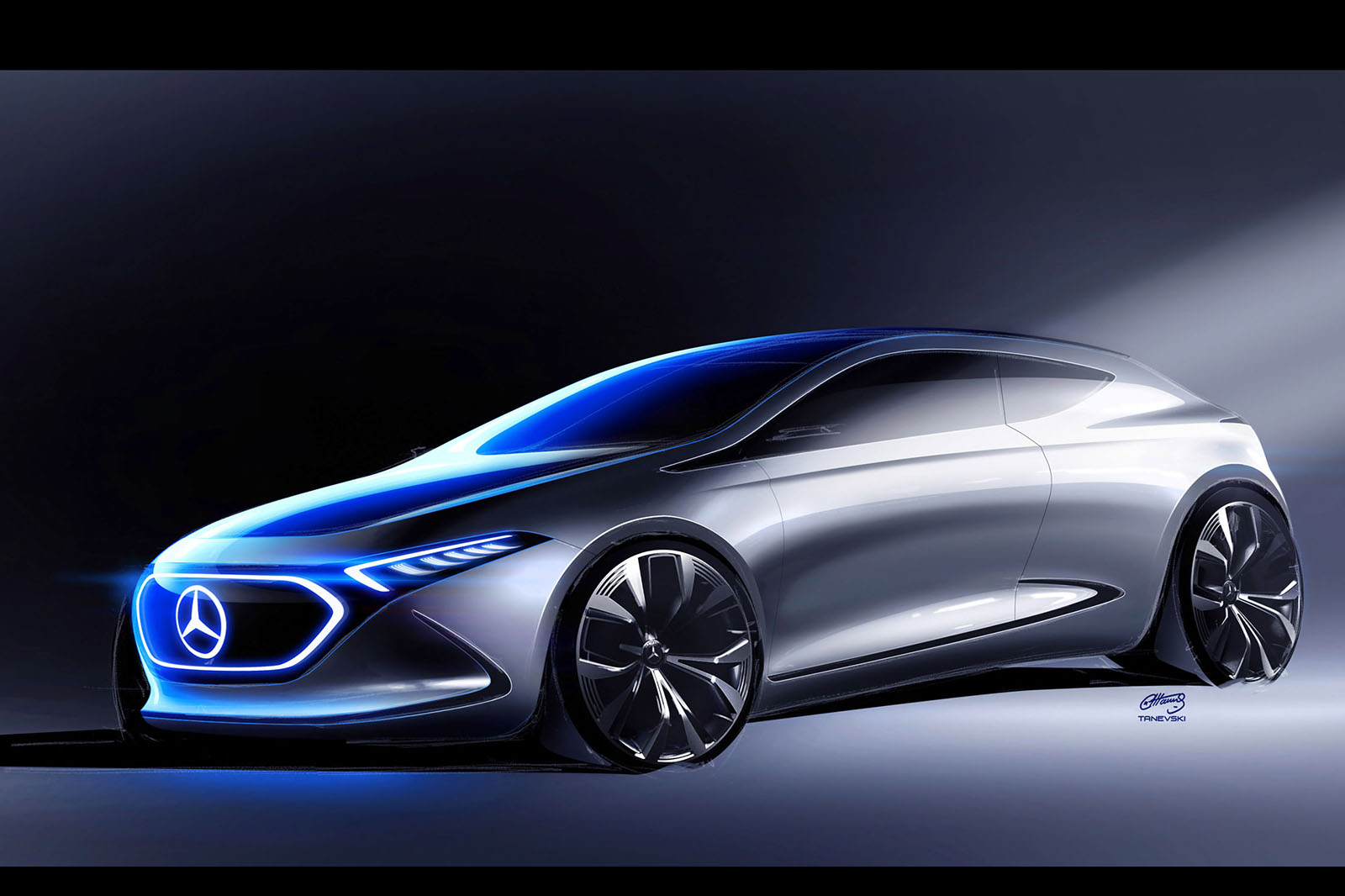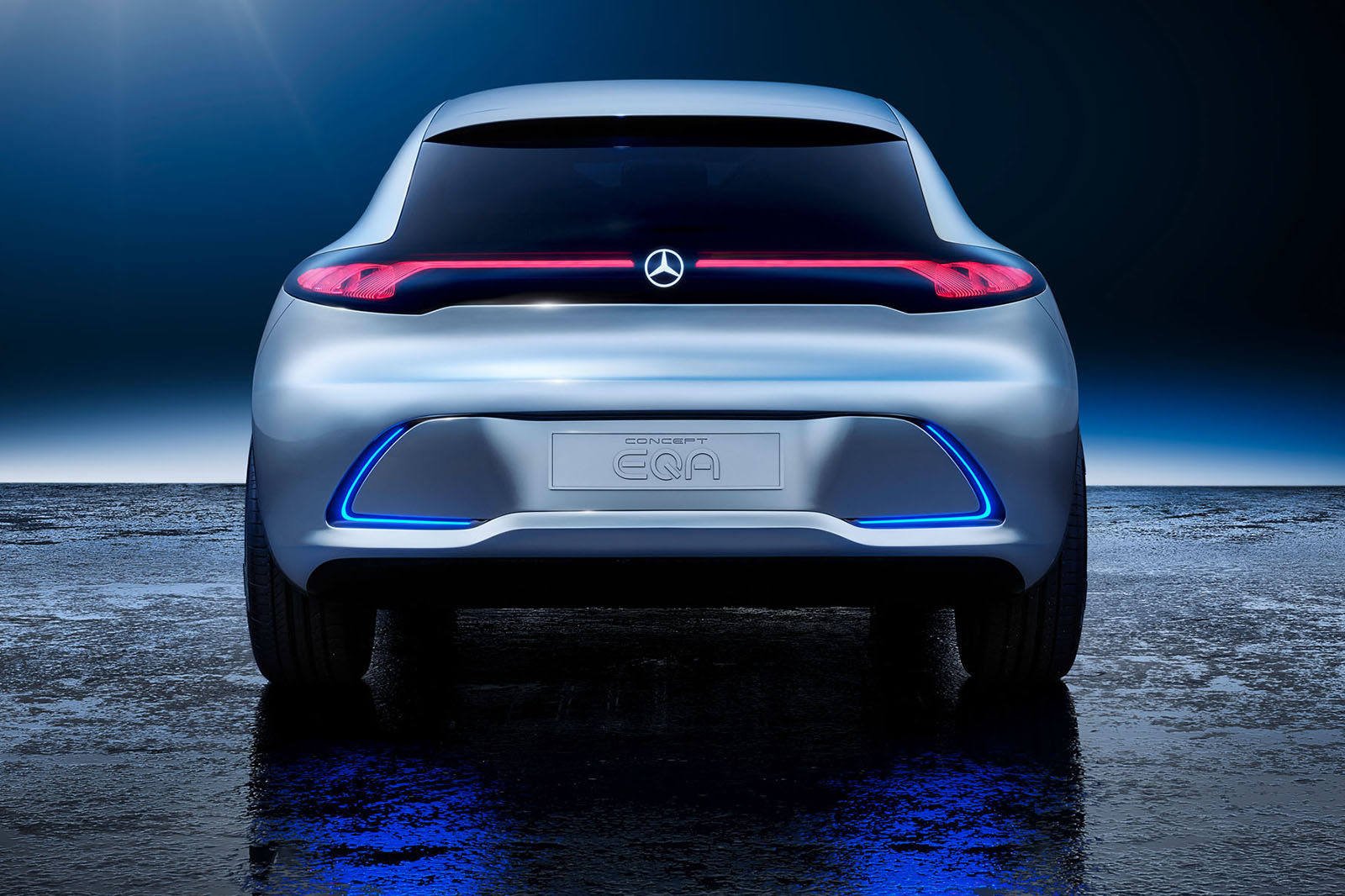Mercedes-Benz to make electric EQA hatchback at upgraded Smart factory in France
Mercedes showed a concept version of the car that will compete with the BMW i3 and Volkswagen ID hatchback.
Mercedes-Benz will construct its EQA electric hatchback at its Hambach plant in France where the electric Smart is currently made, following an investment of €500 million (about £438m) (Rs 4,000 crore).
The entry-point into the Mercedes's EQ electric car sub-brand, previewed by the Concept EQA at the 2017 Frankfurt motor show, will go on sale in 2020. It will join the larger EQC previewed in concept form at the 2016 Paris Motor Show.
Set to offer a 249-mile (400km) range and be priced to directly rival the BMW i3, which costs from £34,075 (Rs 31 lakh) in Britain, the EQA will come as part of a 10-car electric line-up due in showrooms by 2022.
Mercedes is pushing to enhance the productivity of its global plant network, with the Hambach site becoming an electric specialist that will help the brand up its EV production numbers without affecting existing supply for petrol and diesel models.
Mercedes production chief Markus Schaefer said the Smart plant in Hambach will grow to "become a part of our global compact car production network with the lead plant in Rastatt, Germany".

Dr Dieter Zetsche, chairman of the Board of Management of Daimler AG and head of Mercedes-Benz Cars, and the French president Emmanuel Macron met at the Élisée Palace in Paris on the occasion of an investment of 500 million euror. The Hambach plant in France will produce a compact electric car of the EQ new product and technology brand.
Mercedes chairman Dieter Zetsche said last year that Mercedes's push for electric is "gathering pace", and that "the EQA proves that we are serious about introducing electric mobility throughout the portfolio".
The starting point for the EQA is a new electric vehicle platform developed by Mercedes for use in all upcoming EQ models. Known internally under the codename EVA (electric vehicle architecture), it has been conceived to allow the new model to be built alongside the car maker’s conventional compact car models in the same factories that produce the existing A-Class, B-Class, CLA, CLA Shooting Brake and GLA.
The flexible platform is planned to support either front, rear or four-wheel drive, with either one or two electric motors and a scalable battery, mounted low down within its flat floor structure, operating on an 800-volt electrical system that can provide rapid charging.
Predictably, the smallest of Mercedes’ EQ models follows the same stylistic path taken by the EQC, with conventional proportions and smooth surfacing in a treatment Mercedes describes as its electric aesthetic. A long wheelbase helps provide the new concept with short overhangs, while a combination of wide tracks and 20in wheels in a double spoke optic provide a suitably sporting stance.
 While it has a three-door layout in concept car guise, insiders suggest the production version of the EQA will receive a five-door hatchback layout, with accommodation for up to five in an interior they say is “considerably larger” than that of the soon-to-be-superseded third-generation A-Class, owing to the packaging advantages provided by its electric driveline.
While it has a three-door layout in concept car guise, insiders suggest the production version of the EQA will receive a five-door hatchback layout, with accommodation for up to five in an interior they say is “considerably larger” than that of the soon-to-be-superseded third-generation A-Class, owing to the packaging advantages provided by its electric driveline.
As with the EQC, an illuminated black panel incorporating distinctively styled laser-fibre headlights is used up front, ensuring the Concept EQA instantly stands out from the existing range of compact Mercedes models.
The hi-tech front end also acts as a virtual radiator grille. It is programmed to alter the appearance of the new car dependent on the driving mode. In Sport, it depicts what Mercedes describes as a flaming horizontal wing, with a blue hue extending out from an oversized three-pointed start emblem. In Sport Plus, the black panel changes its look to mimic the shape of the Panamericana grille of recent AMG models, complete with vertical louvres.
 A similar treatment black panel treatment is used at the rear, where it visually extends the depth of the rear window and serves to house the concept EQA’s full-width OLED tail-lights.
A similar treatment black panel treatment is used at the rear, where it visually extends the depth of the rear window and serves to house the concept EQA’s full-width OLED tail-lights.
The blue hue of the grille is mirrored in a series of LED lights within the outer and lower sections of the front bumper, the side sills and rear bumper.
Conceptual in nature, the concept EQA has a smooth aero-cheating look, including the loss of the windscreen wipers, the adoption of a remote opening function in place of conventional door handles and a darkened glass roof.
“With the concept EQA, we have reinterpreted our design philosophy. We eliminated creases and lines. It is a bold statement for our EQ brand,” said Mercedes chief design officer Gorden Wagener.
 At 4285mm in length, 1810mm in width and 1428mm in height, the EQA is a scant 14mm shorter, 30mm wider and 6mm lower than the existing third-generation A-Class. It also uses a wheelbase that is 30mm longer than the entry-level Mercedes model at 2729mm.
At 4285mm in length, 1810mm in width and 1428mm in height, the EQA is a scant 14mm shorter, 30mm wider and 6mm lower than the existing third-generation A-Class. It also uses a wheelbase that is 30mm longer than the entry-level Mercedes model at 2729mm.
Power for the second EQ concept car hails from a developmental driveline being readied for a range of EQ models. It uses two electric motors – one mounted up front underneath the bonnet and the other integrated within the rear axle assembly. The set-up, similar to that showcased on the EQC, delivers a combined 268bhp and more than 369lb ft of torque for a claimed 0-62mph (0-100kph)time of “around 5.0sec”.
With a four-wheel-drive system supporting variable torque distribution between the front and rear axles and a battery pack mounted low down within the floor structure, Mercedes is already talking up the dynamic qualities of the upcoming production car, which it hints will offer different driving modes. In the concept EQA, the driver can choose between Sport and Sport Plus to vary the torque distribution front to rear.
 The EQA has been conceived to run a 60kWh lithium-ion battery to be produced by Mercedes sister company Accumotive. It is claimed to endow the entry-level electric car with an overall range of “around 249 miles” and can be charged either via traditional plug-in or induction means, with officials claiming ten minutes if charging is sufficient to produce an added 62miles (100km) of range on a high-voltage system.
The EQA has been conceived to run a 60kWh lithium-ion battery to be produced by Mercedes sister company Accumotive. It is claimed to endow the entry-level electric car with an overall range of “around 249 miles” and can be charged either via traditional plug-in or induction means, with officials claiming ten minutes if charging is sufficient to produce an added 62miles (100km) of range on a high-voltage system.
Mercedes claims its investment in US charging station provider ChargePoint will benefit its plans to roll out a range of EQ-branded models by allowing it to offer more charging solutions. At the unveiling of the concept EQA, the German carmaker announced plans to expand ChargePoint’s operations to Europe as part of efforts to expand the existing charging infrastructure.
Also read: Roland Folger: ‘The top priority would be plug-in hybrids’
RELATED ARTICLES
Hyundai Mobis develops battery system with built-in fire extinguishing feature
The new system prevents heat from being transferred to adjacent cells and extinguishes a fire early by spraying an agent...
FORVIA and Smart Eye unveil in-car iris and facial biometric authentication
This world-first innovation not only enhances the user experience by enabling seamless and secure payments but also open...
Continental to discontinue tyre production at Malaysian plant
Following a business review to safeguard its competitiveness and business performance in the APAC region, where Malaysia...






 21 May 2018
21 May 2018
 5656 Views
5656 Views
































 Autocar Professional Bureau
Autocar Professional Bureau




